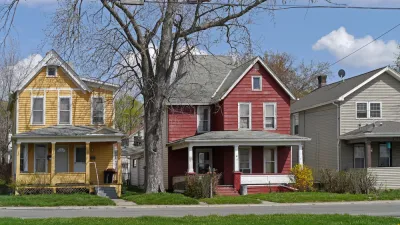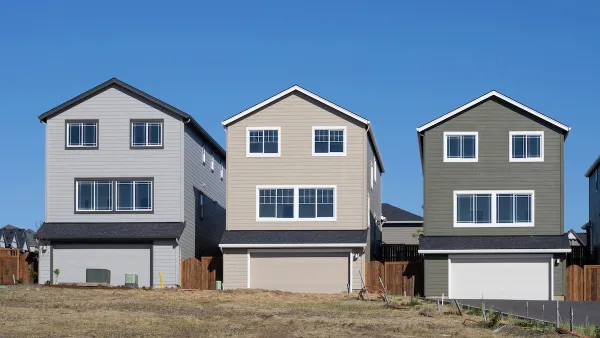For low-income residents in high-cost areas, there's no substitute for the public sector to provide below-market rate housing. But for middle-income households, the market should be able to produce housing without subsidy. So why doesn't this happen?

In a previous Shelterforce blog post, I argued that we cannot give up hope that the market will build middle-income housing. Granted, over the past decade, most new housing has been built in the luxury segment of the market, yet some argue that this isn’t a problem because the luxury housing naturally "filters" down and eventually offers everyone the benefit of lower rents and prices. I agree that refusing to build luxury housing (in the face of rising demand from wealthy households) will only make the housing problem worse for everyone else, but exclusively building luxury housing is no strategy for addressing the housing problems of low-income or even middle-income people.
For low-income residents in high cost areas, there is no substitute for public sector action to provide below-market rate housing, but for middle-income households, the market really should be able to provide appropriate housing without government subsidy. It is not doing that now, but we shouldn’t give up on the idea because ultimately it will bring more benefit to a wider segment of the population than luxury housing can.
So why doesn’t this happen?
This is a surprisingly complex problem that is made all the worse by the fact that everyone seems to expect it to have a very simple answer. In local policy discussions, I hear two grossly simplistic answers that I believe do more harm than good. Some people seem predisposed to conclude that we don’t build more moderate-income housing because of developer greed. Another group of people want the culprit to be unnecessary government regulation. Both explanations stand in the way of really understanding the problem and doing something effective to solve it.
Do Developers Focus on Luxury Housing Because They’re Greedy?
Of course developers are motivated by profit, but I don’t think there is any reason to believe that real estate developers are any more (or less) greedy than producers in any other industry. Yet when you look at most other consumer goods, the market provides options at a range of price, and quality, points. In the auto market, working class and middle-income people don’t all drive 40-year-old BMWs and Mercedes, many buy brand new Ford Focuses and Honda Civics.
While some of the most profitable cars on the road are luxury cars, the Ford F-150 pickup truck and the Toyota Camry are also at the top of the list, and it’s not hard to see why. In 2016, Toyota sold almost 400,000 new Camrys and nearly as many new Corollas. Their best selling luxury car, the Lexus EX, sold only 50,000 units. Even assuming they earn a much higher margin per car, luxury models are not better investments because the volume is so much lower.
It is pretty clear that the real estate industry would make vastly more money if it were to build more housing for middle-income households, even if the profit per unit were lower on those projects. So the problem can’t be as simple as greed.
FULL STORY: Why Aren’t We Building Middle Income Housing?

Analysis: Cybertruck Fatality Rate Far Exceeds That of Ford Pinto
The Tesla Cybertruck was recalled seven times last year.

National Parks Layoffs Will Cause Communities to Lose Billions
Thousands of essential park workers were laid off this week, just before the busy spring break season.

Retro-silient?: America’s First “Eco-burb,” The Woodlands Turns 50
A master-planned community north of Houston offers lessons on green infrastructure and resilient design, but falls short of its founder’s lofty affordability and walkability goals.

Test News Post 1
This is a summary

Analysis: Cybertruck Fatality Rate Far Exceeds That of Ford Pinto
The Tesla Cybertruck was recalled seven times last year.

Test News Headline 46
Test for the image on the front page.
Urban Design for Planners 1: Software Tools
This six-course series explores essential urban design concepts using open source software and equips planners with the tools they need to participate fully in the urban design process.
Planning for Universal Design
Learn the tools for implementing Universal Design in planning regulations.
EMC Planning Group, Inc.
Planetizen
Planetizen
Mpact (formerly Rail~Volution)
Great Falls Development Authority, Inc.
HUDs Office of Policy Development and Research
NYU Wagner Graduate School of Public Service


























